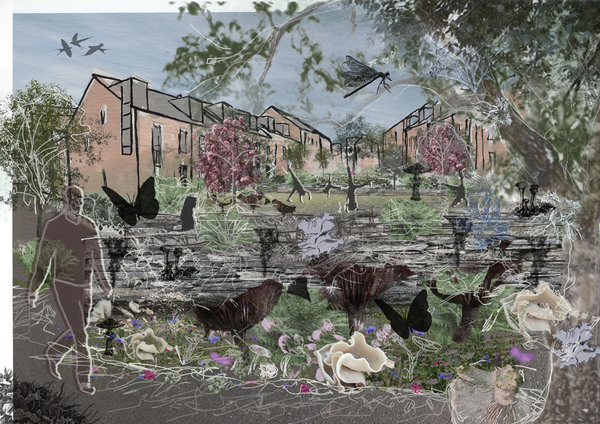Have you ever noticed how hot it is to walk across a car park or along a footpath in a heat wave? Is it a safe environment for children to play? Are these hardscape-dominated (residential) areas adaptable to mitigate the climate and biodiversity crises?
My studio project, [In]Visible, proposes a climate and biosphere sensitive alternative to a 2014 hardscape dominated housing development in Stockport. The concept applies Mikhail Bakhtin's theory of polyphony – promoting multiple voices, simultaneously such as that of an orchestra – to lifeforms to inform design decisions.
Fungi and lichen became the focus as the unheard, underappreciated, keystone voices essential to other lifeforms. By improving habitability for microbes, the project enhances the quality of the local atmosphere, biosphere and rhizosphere. It explores various opportunities to connect the ecosystem and mycorrhizae networks from the adjoining wasteland, all whilst embracing a low-tech, minimal waste approach conservative of resources and energy for a low carbon footprint and high biodiversity net gain (BNG).
Chance observations of fragments from a broken road revealed a strong root network existing within the layers of asphalt and combined with the microbe workshop learning to inspired the reuse of the dominant material - asphalt - in various ways across the site to create a range of new uniquely urban microhabitats from bare substrate retaining walls to asphalt gardens using multiple grades and block pieces.
The project prioritises sustainability and longevity for all inhabitants improving air quality, heat mitigation, biodiversity, soils, and flood mitigation to create robust urban habitats. The concept, research and key elements are all transferable for retrofitting (residential) streets and forming wildlife networks - not just corridors - across our urban areas. The vision is a diverse, interconnected tapestry of life and natural resources creating an urban realm habitable for all life in the 21st Century.


